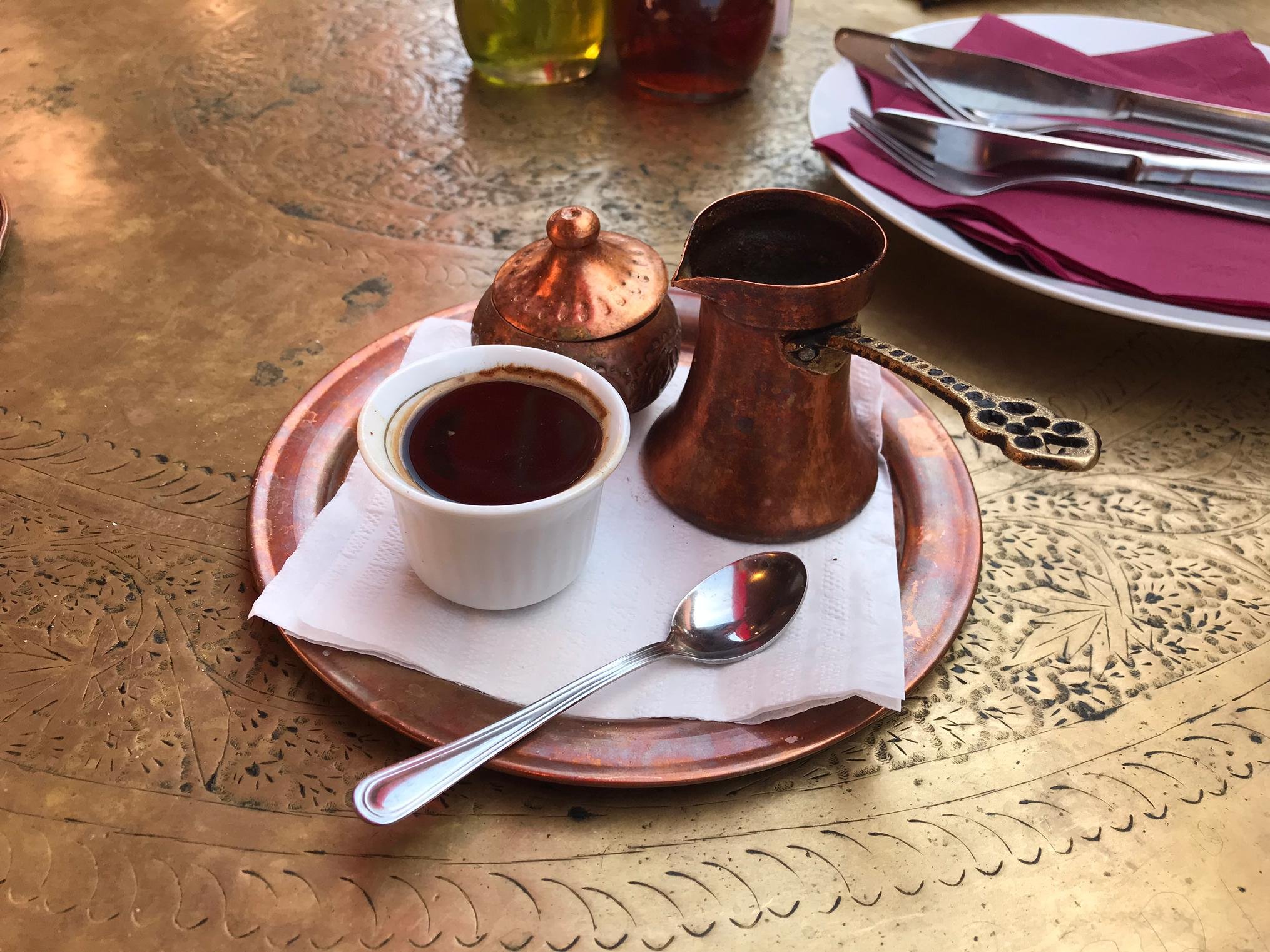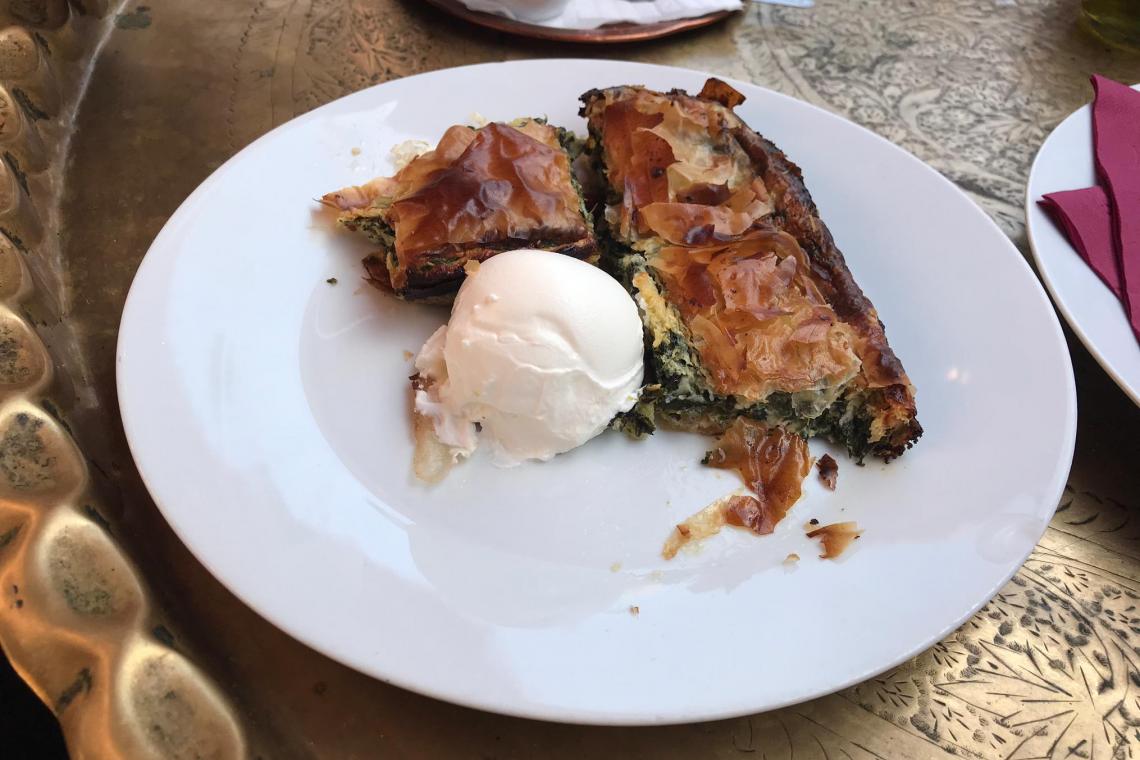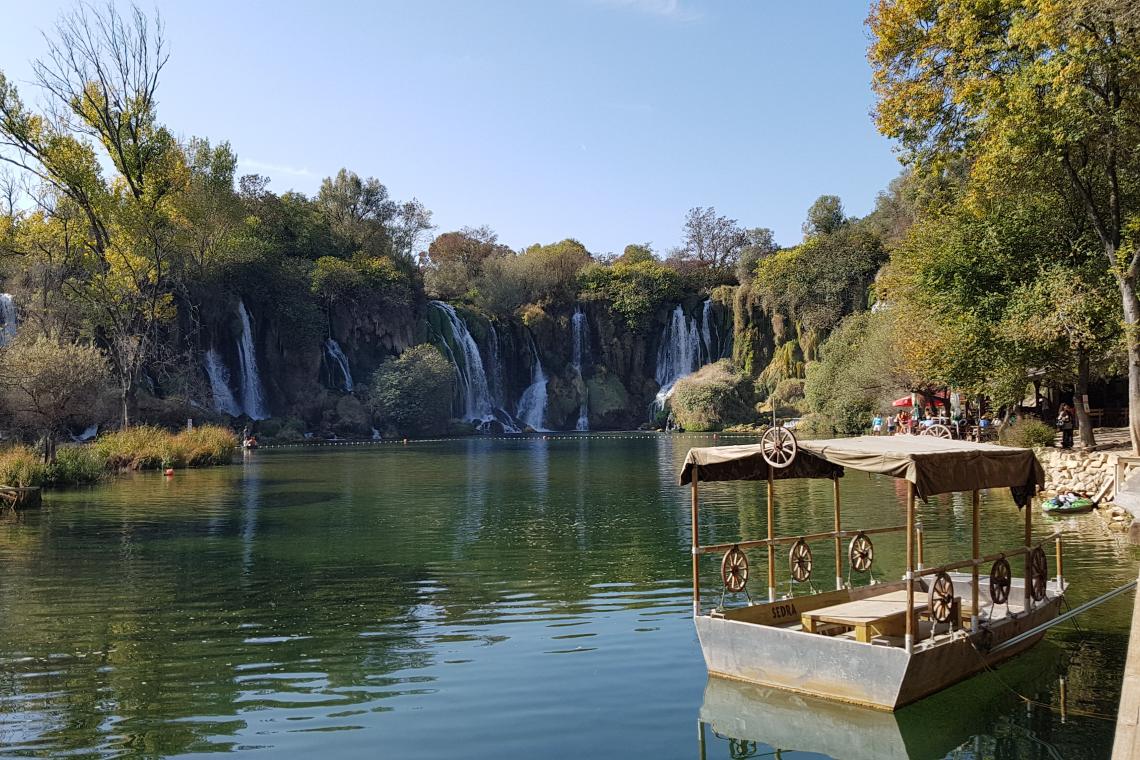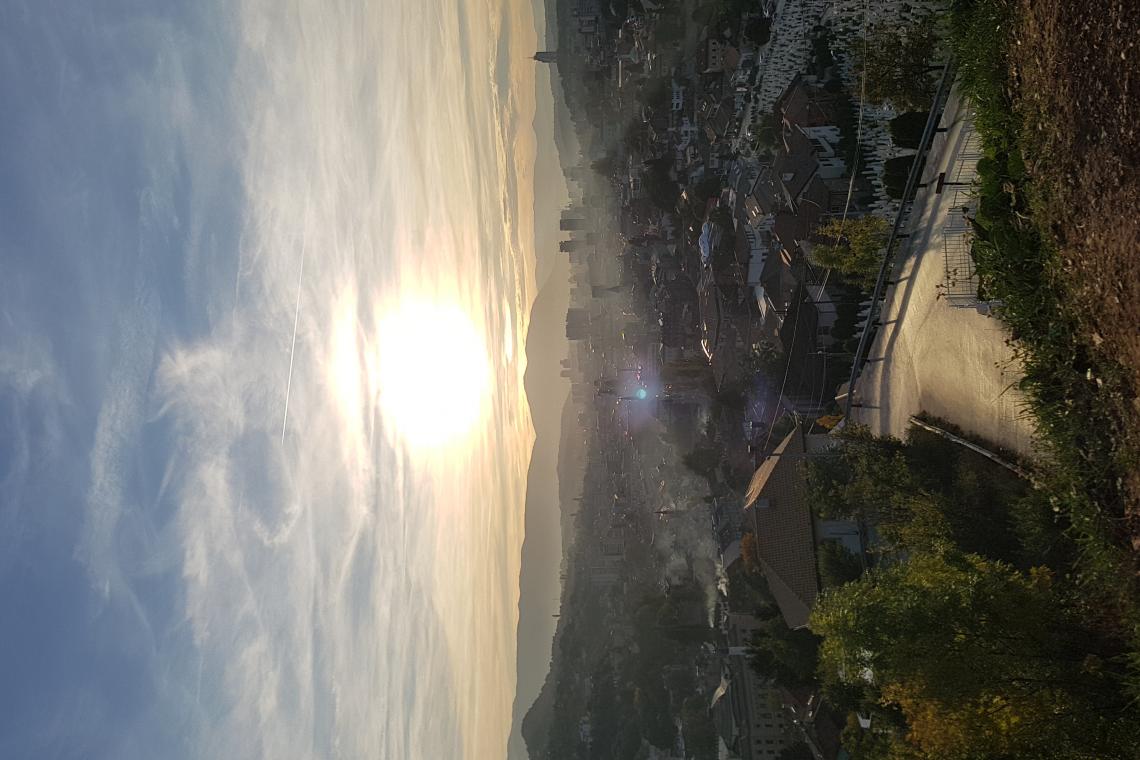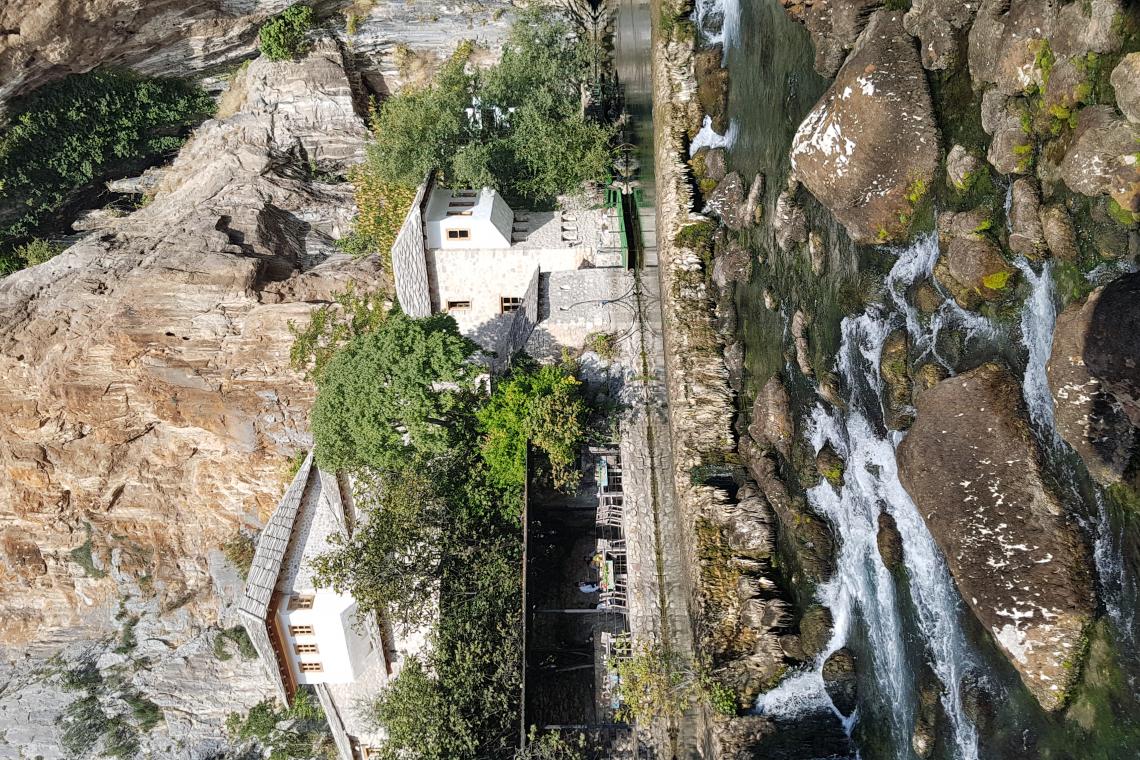The Ottomans built the city, and when the Austro-Hungarian Empire later took over, the city was not destroyed, but simply expanded to include the existing city center. Sarajevo is a multicultural city. In the Bečka kafana Viennesse Café, I enjoy the coffee selection of a Viennese café and eat baklava with it. A few meters further on I drink the coffee from small copper bowls and watch the people passing by. Some in short skirts and shorts, some women with headscarves. The smell of roasted cevapcici is in the air. Within a few meters, we reach both a Catholic and an Orthodox church, a synagogue, and a mosque. Again and again, we cross red filled holes on our city walk. "Roses of Sarajevo" explains our city guide. Where during the siege of the city in the Balkan war at least 3 people were killed by grenade impacts, the bullet holes were filled with red paint in memory. The war should not be forgotten so that it is not repeated.
If you have had enough of the hustle and bustle of the city, you can reach Trebević in no time at all by gondola. Our guide takes us through the forest to his favorite place and asks us about our further travel plans. He is not enthusiastic when he learns what we are planning. He even thinks our idea of leaving the city after our two-day stay in Sarajevo and staying overnight on the way is stupid. It is much better to stay in Sarajevo and explore the country with day trips. Or to go to Croatia, where everything is more beautiful anyway. This thinking of the Bosnians about their country already struck us in Switzerland and is probably also a point, why the tourism in Bosnia does not come to the run. Contrary to his advice, we stick to our decision and do not regret it at all. The roads are in good condition, but as there is only a short stretch of motorway in the country, the roads are very winding and narrow in the mountains.
Since we have not booked any accommodation on the way, we simply look where we land. We have enough time to explore the new planned city Andrićgrad in Višegrad and then sit comfortably on the terrace of our accommodation somewhere in the middle of nowhere and enjoy the view of the river Drina, during which we already let ourselves be pampered with culinary delights in the afternoon.
The trip to Mostar takes us through the untouched Sutjeska National Park with its rugged mountains and high trees. Tjentiste War Memorial still stands in the park and attracts people from all over the Balkans, although not as many as in Tito's day. Before we drive to the famous city of Mostar, we visit the dervish monastery Blagj.
During the day, the narrow streets of the old town of Mostar are full of day tourists and so one can stroll quietly through the city in the evening if one is lucky enough to spend the night there. In contrast to Sarajevo, here one sees even more houses that were not rebuilt after the war and that reminds one that the coexistence of the cultures in Mostar might not work out as well as one would wish 25 years after the end of the war.
On the way to the Kravica waterfalls and on to Jaice the surroundings change completely. Before we often drove through forests, now we drive through a beautiful karst landscape. But also here we are fascinated by the nature and the hospitality of the people, who welcome us everywhere friendly, even if they perhaps do not understand exactly why we spend our holidays in Bosnia.
Back in Sarajevo, we look forward to the last portion of Cevapcici before flying home the next day.
Source: Manuela Balzarini

